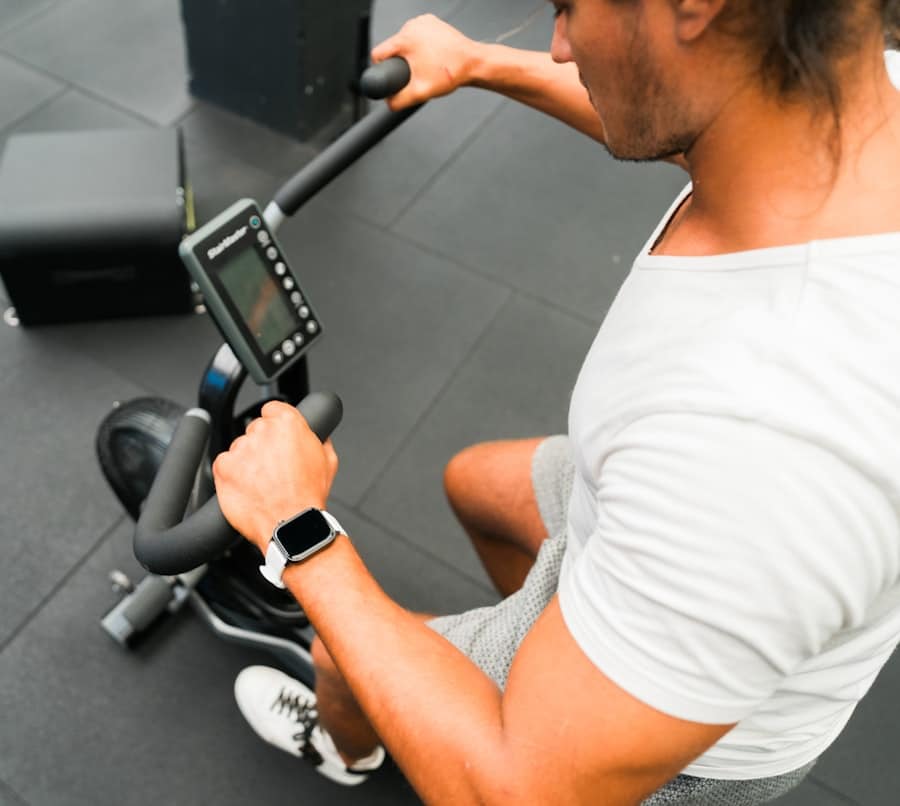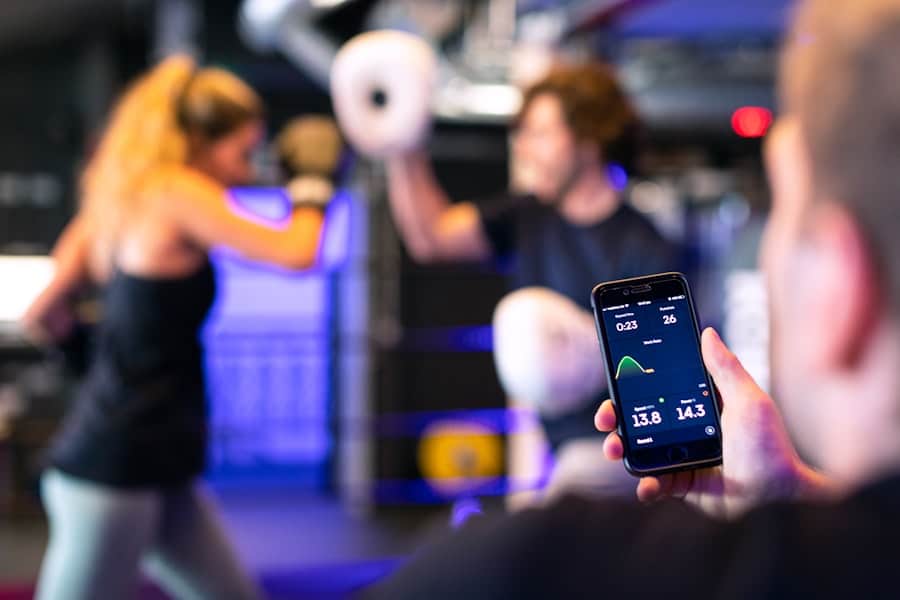Virtual reality (VR) fitness apps have emerged as a revolutionary intersection of technology and health, transforming the way individuals engage with physical exercise. By immersing users in a three-dimensional environment, these applications provide an interactive and engaging platform for workouts that can range from high-intensity interval training to yoga and dance. The allure of VR fitness lies not only in its innovative approach to exercise but also in its ability to cater to a diverse audience, from seasoned athletes seeking new challenges to beginners looking for a fun way to get fit.
As the technology continues to evolve, the potential for VR fitness apps to reshape the fitness landscape becomes increasingly apparent. The rise of VR fitness apps can be attributed to several factors, including advancements in VR technology, increased accessibility of VR headsets, and a growing awareness of the importance of physical health. With the global pandemic prompting many to seek alternative ways to stay active while confined at home, VR fitness apps have gained traction as a viable solution.
These applications offer a unique blend of entertainment and exercise, making workouts feel less like a chore and more like an engaging experience. As users don their headsets and step into virtual worlds, they are not just exercising; they are embarking on adventures that challenge their bodies and minds.
Key Takeaways
- VR fitness apps offer a new and immersive way to exercise, combining virtual reality technology with fitness routines.
- Using VR for fitness can provide benefits such as increased motivation, engagement, and enjoyment during workouts.
- Early adopters of VR fitness apps have faced challenges such as motion sickness, equipment setup, and limited content availability.
- Success stories of early adopters highlight improved fitness levels, weight loss, and a sense of accomplishment through VR workouts.
- To maximize the VR fitness app experience, users should ensure proper equipment setup, take breaks to prevent motion sickness, and explore a variety of workout options.
Benefits of Using VR for Fitness
One of the most significant benefits of using VR for fitness is the enhanced motivation it provides. Traditional workouts can often feel monotonous, leading to decreased enthusiasm over time. In contrast, VR fitness apps create immersive environments that captivate users’ attention and encourage them to push their limits.
For instance, a user might find themselves boxing against a virtual opponent in a vibrant arena or climbing a mountain in a breathtaking landscape. This gamification of fitness not only makes exercising more enjoyable but also fosters a sense of achievement as users complete challenges and reach new milestones. Moreover, VR fitness apps can cater to various fitness levels and preferences, making them accessible to a broader audience.
Many applications offer customizable workout plans that adapt to individual goals, whether it’s weight loss, muscle gain, or improved endurance. For example, apps like “Beat Saber” combine rhythm-based gameplay with physical movement, allowing users to engage in cardio workouts while enjoying their favorite music. This adaptability ensures that users can find workouts that resonate with them personally, increasing the likelihood of long-term adherence to their fitness routines.
Challenges Faced by Early Adopters

Despite the numerous advantages of VR fitness apps, early adopters have encountered several challenges that can hinder their experience. One primary concern is the cost associated with acquiring the necessary hardware. High-quality VR headsets can be expensive, and not everyone may be willing or able to invest in this technology.
Additionally, the requirement for a suitable space to use VR equipment can pose logistical issues for some users. Limited room for movement can restrict the effectiveness of certain workouts and diminish the immersive experience that VR promises. Another challenge is the potential for motion sickness or discomfort during use.
Some individuals may experience nausea or dizziness when engaging with VR environments, particularly if they are not accustomed to the technology. This issue can be exacerbated by poorly designed applications that do not account for user comfort or by extended periods of use without breaks. As developers continue to refine their products, addressing these concerns will be crucial in ensuring that VR fitness apps are accessible and enjoyable for all users.
Success Stories of Early Adopters
Numerous success stories have emerged from early adopters of VR fitness apps, showcasing the transformative impact these technologies can have on individuals’ health and well-being. One notable example is a user who struggled with motivation and consistency in their workout routine prior to discovering VR fitness. After integrating an app like “Supernatural” into their regimen, they found themselves eagerly participating in daily workouts set against stunning virtual backdrops.
The combination of guided workouts and engaging environments led to significant improvements in both physical fitness and mental health, illustrating how VR can foster a positive relationship with exercise. Another inspiring story comes from a group of friends who decided to embark on a fitness journey together using VR technology.
As they shared their progress and celebrated each other’s achievements, they experienced enhanced motivation and camaraderie that traditional gym settings often lack. Their journey highlights how VR fitness apps can facilitate social connections while promoting healthier lifestyles.
Tips for Maximizing VR Fitness App Experience
To fully leverage the benefits of VR fitness apps, users should consider several strategies that can enhance their experience. First and foremost, it is essential to create an optimal workout environment. This includes ensuring ample space for movement, removing obstacles that could lead to injury, and adjusting lighting conditions to minimize glare on the headset display.
A dedicated workout area can significantly improve immersion and safety during sessions. Additionally, users should take advantage of the customization features offered by many VR fitness apps. By tailoring workouts to individual preferences and goals, users can maintain engagement and motivation over time.
Setting specific targets—such as completing a certain number of workouts per week or achieving personal bests—can also provide a sense of purpose and accomplishment. Furthermore, incorporating variety into workout routines by exploring different apps or activities can prevent boredom and keep users excited about their fitness journey.
Potential Risks and Precautions for VR Fitness

While VR fitness apps offer numerous benefits, it is crucial for users to be aware of potential risks associated with their use. One significant concern is the risk of physical injury due to improper form or overexertion during workouts. Users should prioritize safety by ensuring they are familiar with the movements required in each exercise and listening to their bodies when it comes to intensity levels.
Taking breaks as needed and gradually increasing workout difficulty can help mitigate this risk. Another consideration is the impact of prolonged use on mental health and well-being. While many users find VR workouts invigorating, excessive screen time can lead to feelings of isolation or disconnection from reality.
It is essential for individuals to balance their virtual workouts with outdoor activities or social interactions in real life. Setting time limits on VR sessions can help maintain this balance while still allowing users to enjoy the immersive experiences that these apps provide.
Future of VR Fitness Apps
The future of VR fitness apps appears promising as technology continues to advance at an unprecedented pace. Innovations such as improved motion tracking, haptic feedback devices, and more sophisticated AI-driven personal trainers are likely to enhance user experiences significantly. These developments could lead to even more immersive environments where users feel as though they are truly part of the action, whether they are participating in a virtual group class or competing against others in real-time.
Moreover, as the fitness industry increasingly embraces digital solutions, we may see greater integration between VR fitness apps and wearable technology. Devices that monitor heart rate, calories burned, and other biometric data could provide valuable insights into users’ performance during workouts, allowing for more personalized training regimens. This synergy between VR technology and wearable devices could revolutionize how individuals approach their fitness journeys, making it easier than ever to track progress and achieve goals.
Key Takeaways from Early Adopters
The experiences of early adopters of VR fitness apps reveal valuable insights into the potential of this innovative technology within the realm of health and wellness. Users have reported increased motivation, enhanced enjoyment of workouts, and significant improvements in physical fitness as a result of engaging with these applications. However, challenges such as cost barriers and potential discomfort must be addressed as the industry evolves.
As individuals continue to explore the world of VR fitness, it is essential for them to prioritize safety and balance while maximizing their experiences through thoughtful strategies and community engagement. The future holds exciting possibilities for VR fitness apps as advancements in technology pave the way for even more immersive and effective workout solutions. By learning from early adopters’ successes and challenges, both developers and users can work together to create an inclusive and dynamic fitness landscape that benefits all.
In exploring the insights from early adopters of VR fitness apps, it’s essential to consider the broader landscape of technology and its impact on various sectors. A related article that delves into the intersection of technology and innovation is available on Enicomp’s website. This article, titled “An Original Home for Technology News and Reviews,” provides a comprehensive overview of the latest advancements and trends in the tech world, offering valuable context for understanding the evolution of VR fitness applications. For more information, you can read the full article by visiting An Original Home for Technology News and Reviews.
FAQs
What are VR fitness apps?
VR fitness apps are applications that use virtual reality technology to provide users with immersive and interactive fitness experiences. These apps often incorporate virtual environments, gamification, and motion tracking to create engaging workouts.
What are some examples of VR fitness apps?
Some examples of VR fitness apps include Supernatural, Beat Saber, BoxVR, and The Thrill of the Fight. These apps offer a variety of workout experiences, including cardio, strength training, and boxing, all within virtual reality environments.
What are the benefits of using VR fitness apps?
Using VR fitness apps can provide several benefits, including increased motivation and engagement, a more enjoyable workout experience, and the ability to track progress and performance in real time. Additionally, VR fitness apps can offer a convenient and accessible way to exercise from the comfort of home.
What are some challenges faced by early adopters of VR fitness apps?
Early adopters of VR fitness apps have faced challenges such as limited content and variety, technical issues with hardware and software, and concerns about motion sickness and discomfort during extended use. Additionally, some users have encountered difficulties integrating VR workouts into their existing fitness routines.
What lessons have been learned from early adopters of VR fitness apps?
Early adopters of VR fitness apps have learned the importance of content variety, user comfort, and technical reliability. They have also discovered the potential for VR fitness apps to provide effective and engaging workouts, as well as the need for ongoing innovation and development within the VR fitness industry.

